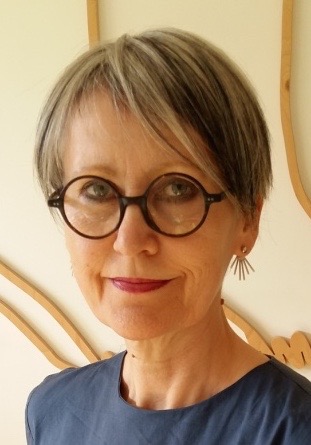Mistakes, Life and Light
- Elise V Allan

- Jun 10, 2020
- 3 min read
first published August 2018

When I was a fourth year art student, I worked on the balcony in the Mackintosh at Glasgow School of Art (sadly awaiting rebuilding). A white haired tutor walked with a stick; he was a heavy man, and it was hard work for him to get up the steep and narrow stairs. One day, when he’d slowly made his way up, he found me crying over my mess of a painting. "I just can't paint," I said tearfully. He looked at the painting. "But Child," he replied, "It's full of life and light!" And I looked at it again, and saw what he saw, and the possibilities within it.
At that age, I was wrapped up in myself, and while I was affected by his kindness, I didn't really reflect on it. But the memory has touched me more deeply over the years. And I remember finding out, just before graduation, that I had a job to go to and I went to find him to tell him. We talked in one of the window seats in the Mac, and he pointed out how Zen the building was, as well as greatly encouraging me with my painting.
At the time I felt I was a broken mess. But now, after many years working as a tutor, when I’ve seen a student in tears about their work, what strikes me is how deeply they care, and I can retrospectively see my younger self with respect.
I read Tim Grahl’s Running Down the Dream, this week. He too regarded himself as broken for much of his life. He certainly got himself and his family into some anxiety provoking financial situations before reaching the top in his career. In his book he shares the tools he used to build a scaffolding for his life that he hoped would give him the structure to ‘fix’ himself. I read the book in two sittings – it was compelling – and the tools are listed again at the end. They’re powerful tools, and I’m already feeling effects from simply reading about them, although I haven’t yet begun to formally use them. Each one is quite a project. But the most inspiring part of the book is in the last part, where he realises that he isn’t broken, but begins to understand that he has accumulated a layer that can gradually be removed to reveal the gold underneath, and that this is the real purpose of the scaffolding. And now, when he messes up, he remembers this, and works to chip away a little more of the covering that’s been hiding the perfection beneath.
The author, Madeleine L’Engle, said, “Human beings are the only creatures who are allowed to fail. If an ant fails, it’s dead. But we’re allowed to learn from our mistakes and from our failures. And that’s how I learn, by falling flat on my face and picking myself up and starting all over again. If I’m not free to fail, I’ll never start a new thing.”
This is difficult to take on board when we’re learning a new skill, and are flat on our faces more often than upright. As Grahl says, we’re meant to suck at new things. We begin to realise, as artists, maybe after ten years or more of our practice, that within a mess or a mistake there is usually potential for finding gold. This might well be the most important thing that we have learned. But then, outwith our specialism, we often completely forget to transfer that tolerance or understanding of the potential of mistakes, to ourselves and to our lives.
Perhaps, when I get things wrong with a friend, with family, a colleague, or financially, I could have a similar attitude to a painting gone wrong. “Ok, this doesn’t look good, or feel comfortable, so what’s the potential here? What behaviour could I chip away?” Like the failed painting, it might take a certain amount of time to see a way forward. But if I recognise that it is not evidence that there’s something wrong with me, and consider whether my mistakes could point the way to new approaches, I might start to sense the perfection underneath the mess on the surface, and notice that life and light are always there waiting to be uncovered.
And for some of you, it will be the opposite way round. You will have developed expertise in using mistakes as opportunities, as parents, partners or colleagues. And if you're new to writing, designing or painting, enjoy learning about working with new mistakes and messes. The work never holds a grudge.




Commentaires